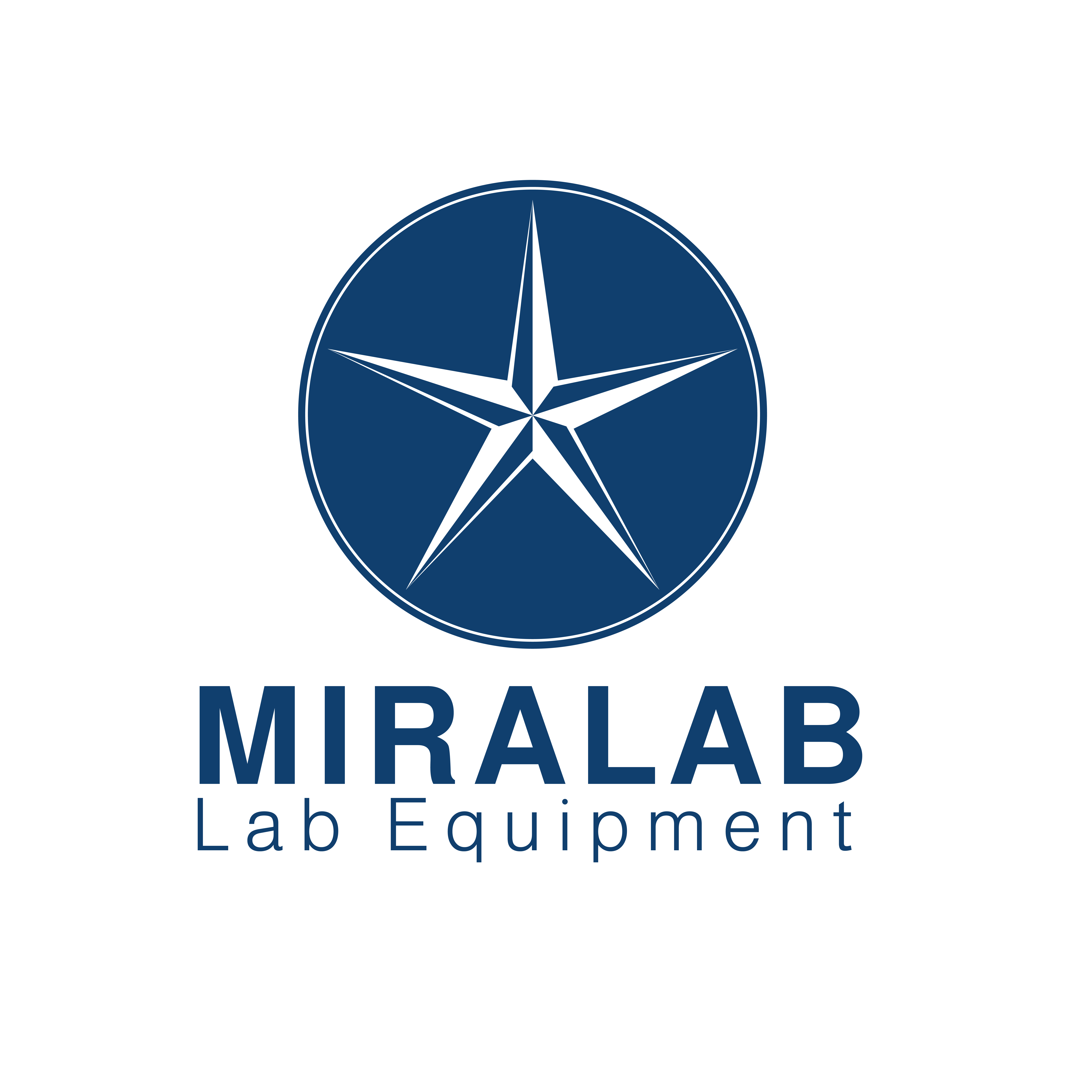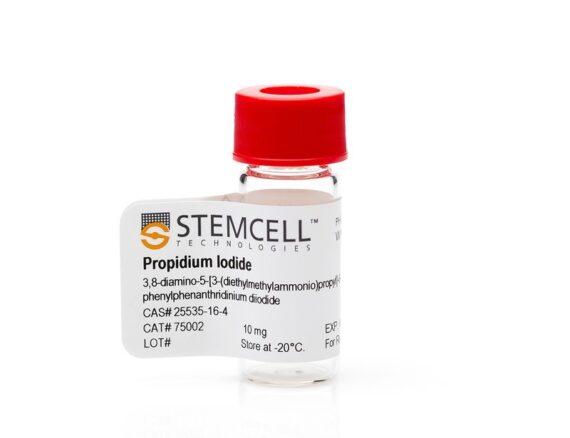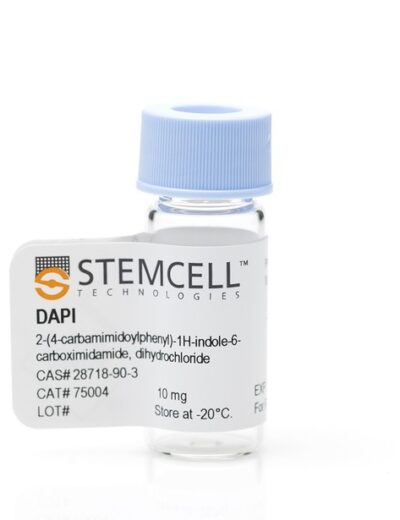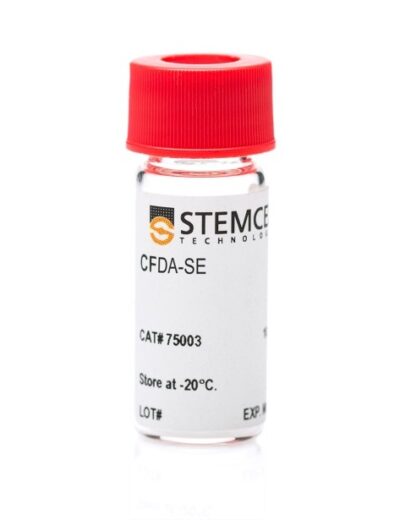Propidium Iodide Cell viability dye (DNA-labeling dye)
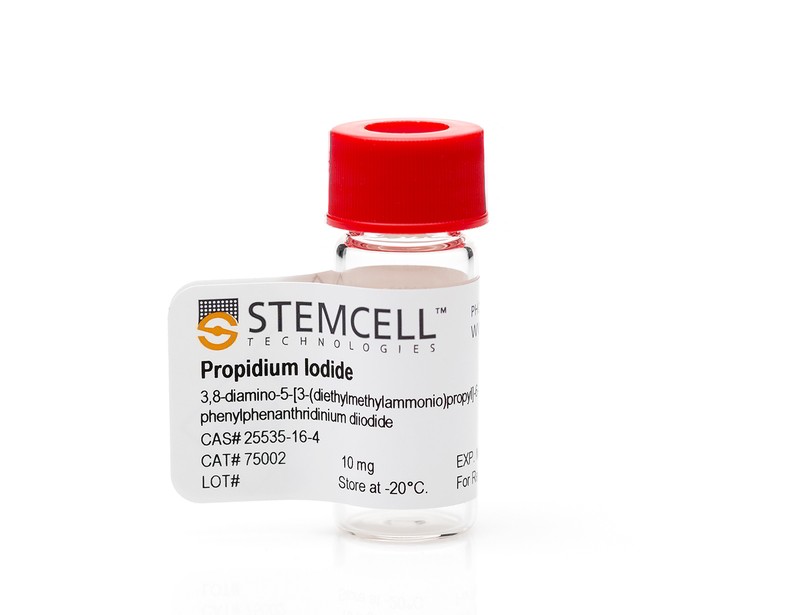
Overview
Propidium Iodide (PI) is a red-fluorescent cell viability dye which is excluded from live cells with intact membranes, but penetrates dead or damaged cells and binds to DNA and RNA by intercalating between the bases. It is widely used as a counterstain to differentiate and exclude non-viable cells in flow cytometric analyses, and can be excited using blue (488 nm), green (532 nm), or yellow-green (561 nm) laser lines, with detection in the FL2 or FL3 channels. PI is used in DNA fluorescence imaging applications to discriminate early and late stages of apoptosis, to study cell‐mediated cytotoxicity, and for chromosome analysis. It is also commonly used in quantitative DNA assays.
Application: Flow Cytometry
Area of Interest: Neuroscience; Immunology; Stem Cell Biology
Chemical Formula: C₂₇H₃₄N₄ · 2I
Molecular Weight: 668.4 g/mol
